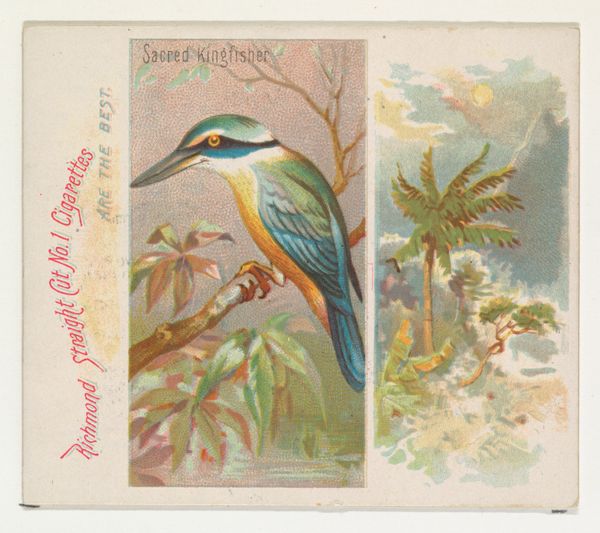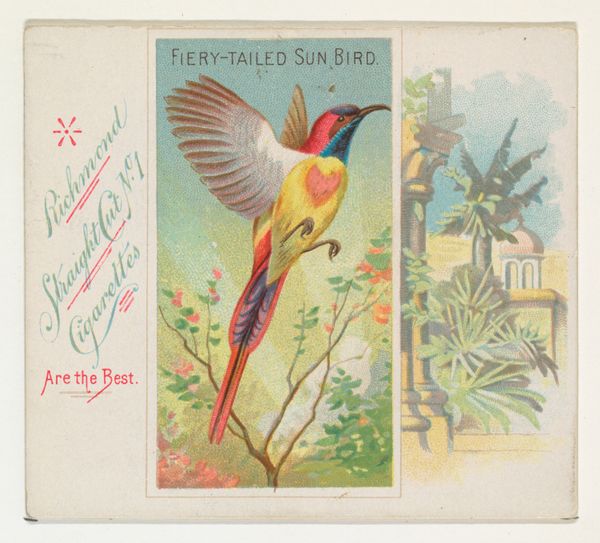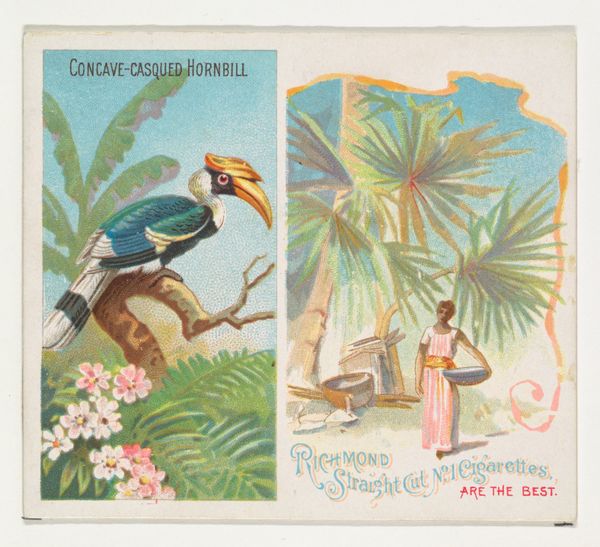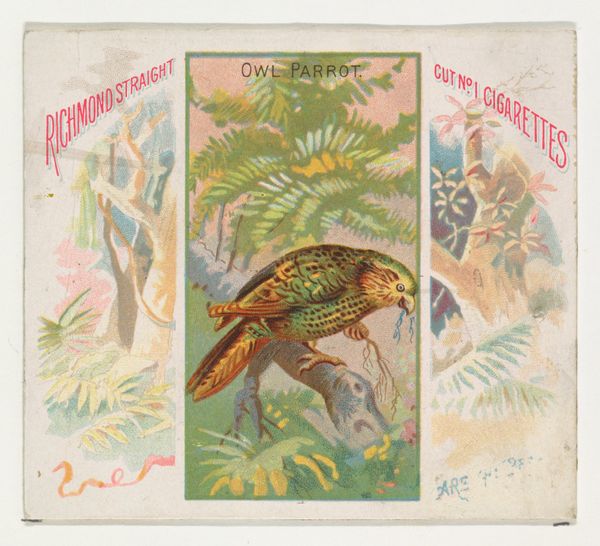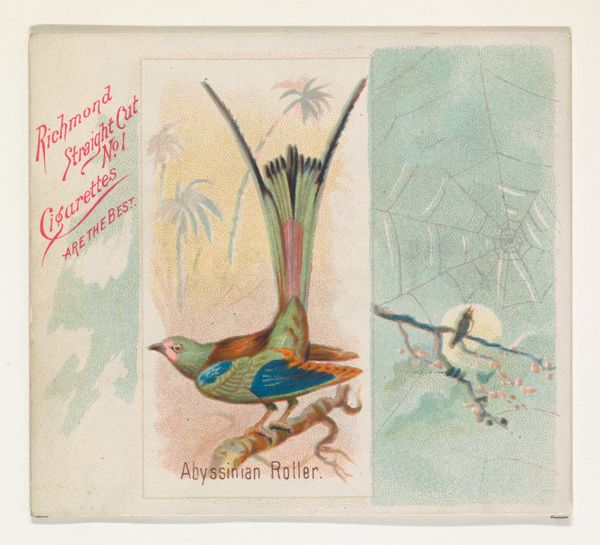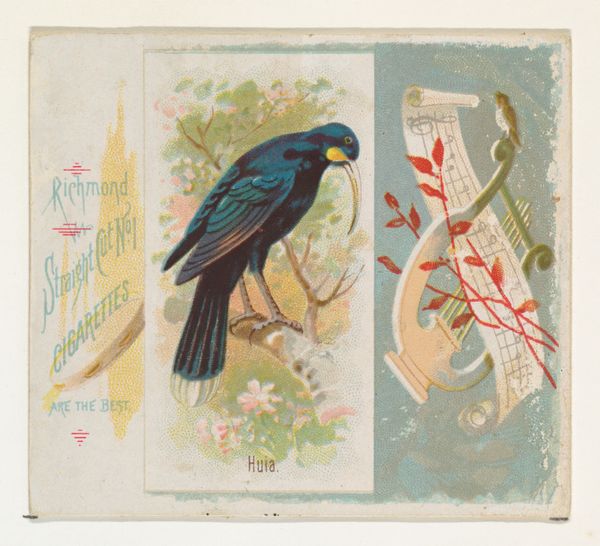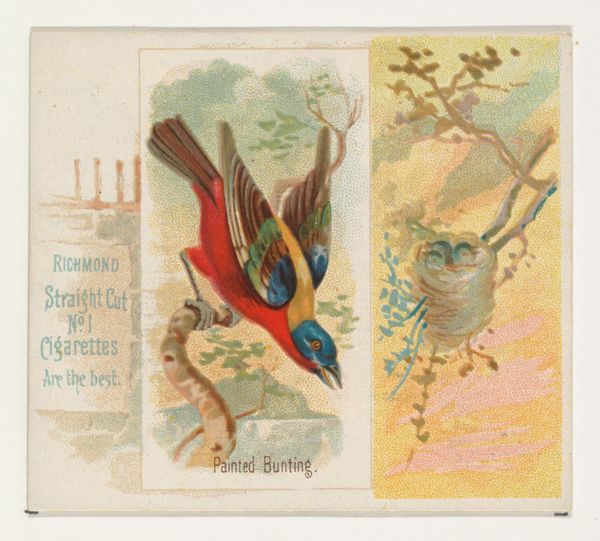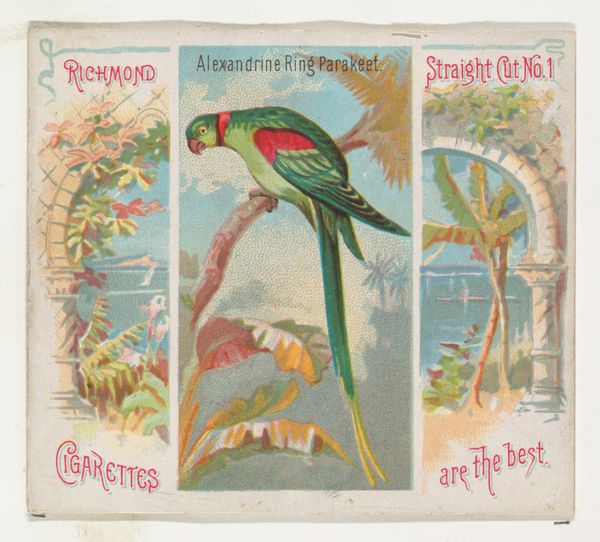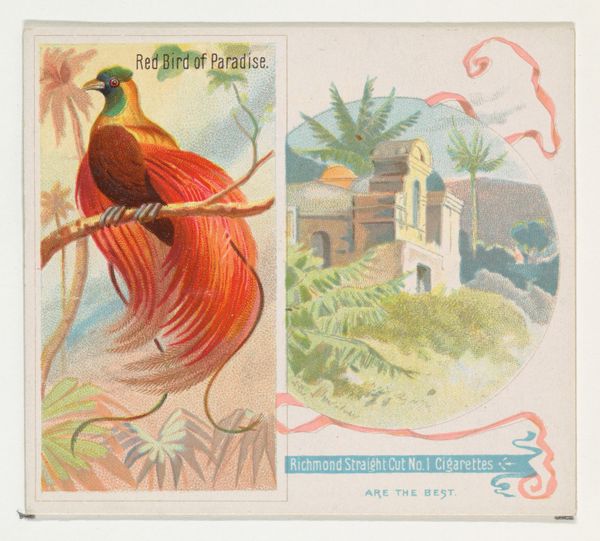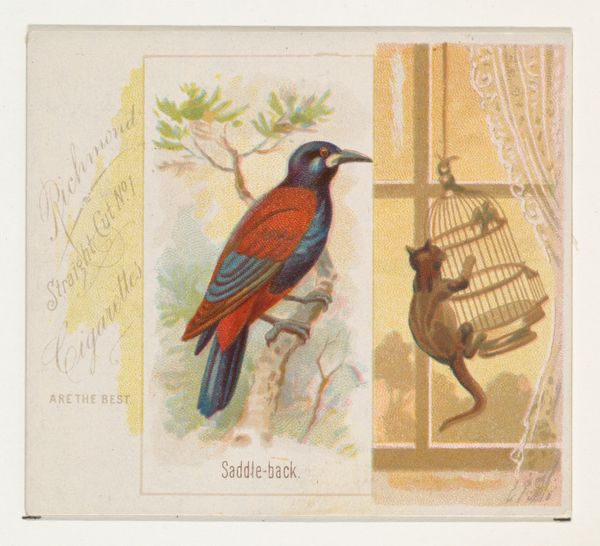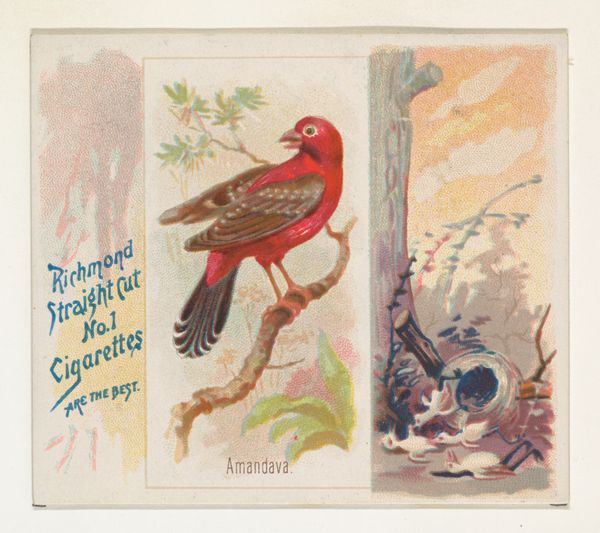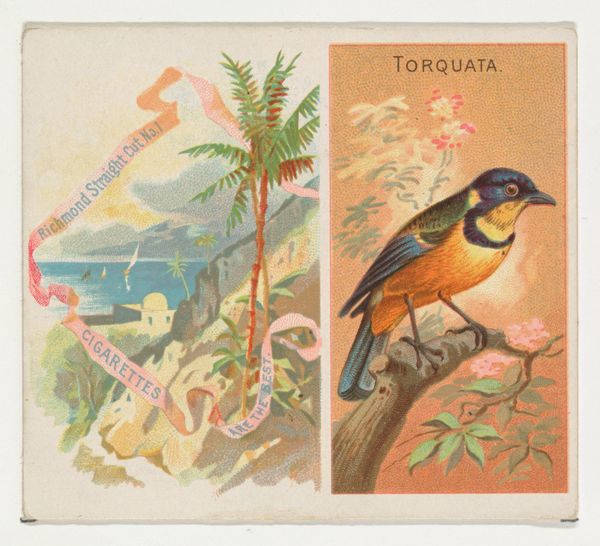
Paradise Tanager, from Birds of the Tropics series (N38) for Allen & Ginter Cigarettes 1889
0:00
0:00
drawing, coloured-pencil, print, watercolor
#
drawing
#
coloured-pencil
#
water colours
# print
#
impressionism
#
bird
#
watercolor
#
coloured pencil
Dimensions: Sheet: 2 7/8 x 3 1/4 in. (7.3 x 8.3 cm)
Copyright: Public Domain
Curator: That little bird just pops off the card! What a striking use of color. Editor: It’s fascinating, isn't it? This is “Paradise Tanager” from the “Birds of the Tropics” series, a promotional print made in 1889 by Allen & Ginter for their cigarettes. It's currently held in the collection of the Metropolitan Museum of Art. The print, featuring watercolor and colored pencil elements, gives you an excellent sense of the material culture of the period. Curator: A cigarette card. So it was cheap, mass produced… an everyday item elevated, in a way. What interests me is the way the design incorporates both naturalism and something more artificial. It shows how something produced to increase sales becomes art. Editor: Exactly! The “Birds of the Tropics” series wasn’t just about pretty pictures. These cards served a specific purpose within a broader socio-economic system. The prints, inserted in cigarette packs, were designed to entice consumers. Think about the exoticism projected here. Curator: And the technique, right? The watercolor wash, combined with the more controlled lines of colored pencil. It hints at high art, but without the preciousness. Editor: True, though that idea of 'high art' at the time, the academic style it might have referenced, was largely promoted by institutions and exhibitions. But the cigarette cards circumvented those structures. Consider also how Allen & Ginter appropriated images of exotic lands, aligning smoking with travel and sophistication for a burgeoning middle class. Curator: It makes you wonder about the lives touched by these little artworks, passed from hand to hand, casually collected. Did they spark curiosity about the natural world? Or simply reinforce the idea of faraway places being commodities, just like the tobacco inside the pack? Editor: Precisely. What we perceive today as quaint images speak volumes about late 19th-century capitalism, promotional culture, and the politics of representation. I find this conflation of consumerism and artistry especially intriguing, a reminder that art rarely exists in a vacuum. Curator: Right! It shows that it is all about production and the cultural power of materials and accessibility in shaping our perception of art. Editor: A thought that remains relevant today.
Comments
No comments
Be the first to comment and join the conversation on the ultimate creative platform.
